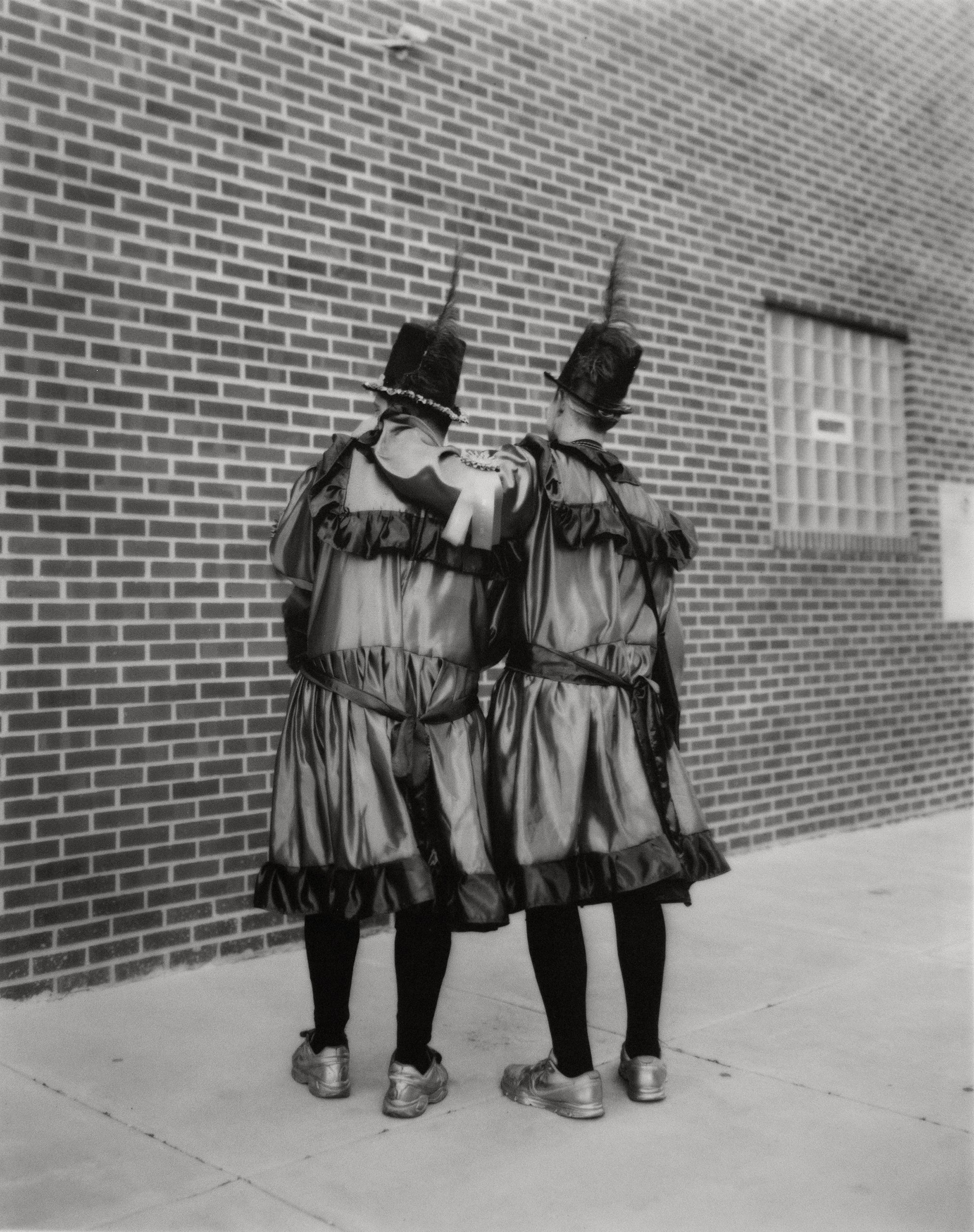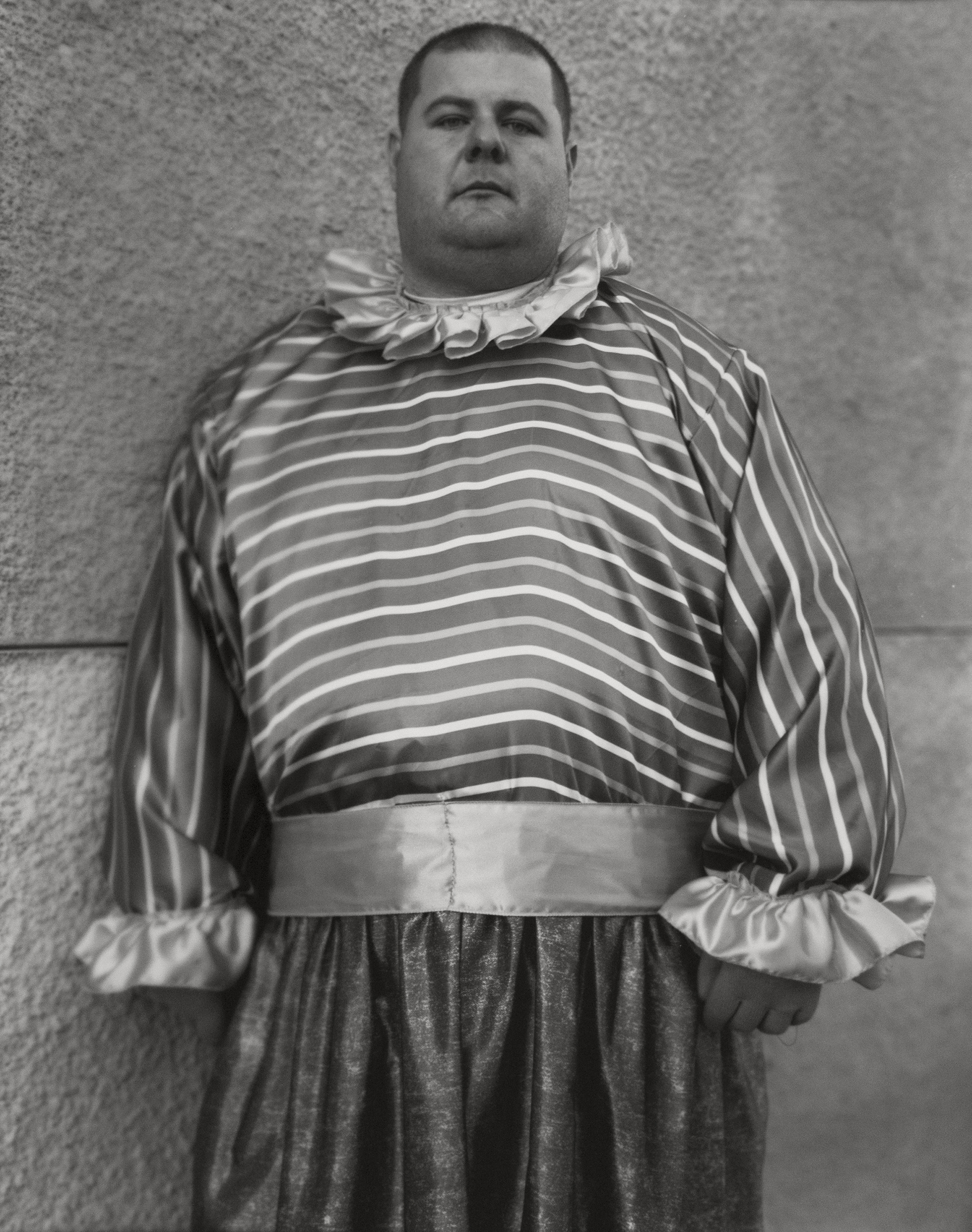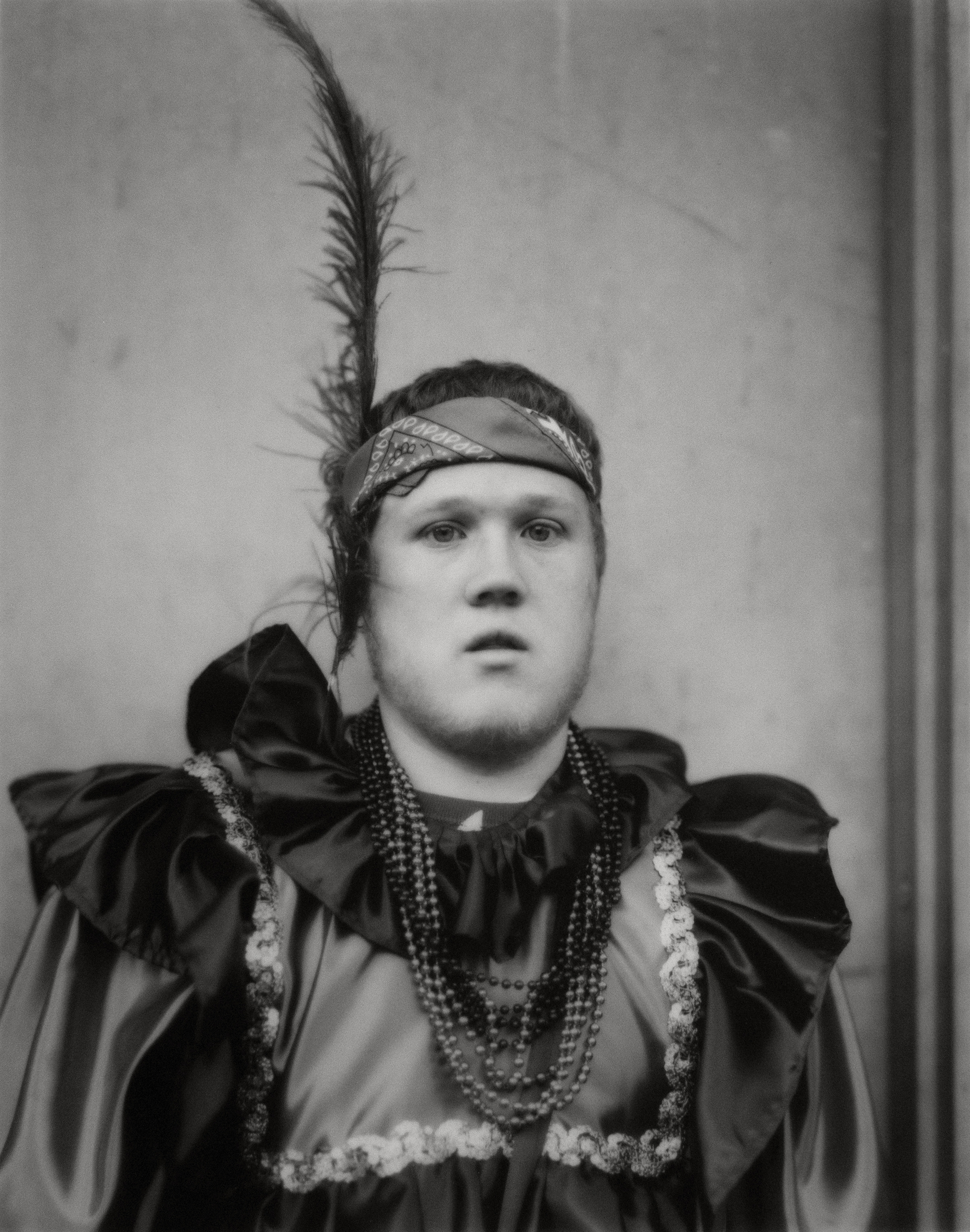
The annual spectacle of the Mummers Parade is a circus of elaborate costumes and fancy footwork. Every New Years Day for the last 116 years, Philadelphians have pranced the streets to pay homage to community tradition. For photographer Andrea Modica, who has been documenting Mummers for the last nine years, it is this sense of neighborly spirit that first drew her in. In a country where society is becoming increasingly fractured, events like this offer a rare opportunity to rally together.
But in among the innocent merrymakers, some have been criticized for parading in culturally inappropriate costumes; from blackface to mock Native American headdresses to takedowns of the LGBTQ community. This reached a peak in 2016 and spurred the organizers to offer sensitivity training to participants. And while hate crimes in the U.S. have reportedly risen under the new administration, this year’s parade seemed largely free from controversy, compared to other years.
The delicate dance between satire and offense makes the parade’s history a complicated one, knotted with the authority of ancient tradition (the original Mummers date back to ancient Egypt) and modern interpretation. Modica’s portraits artfully express this complexity. “For me, it’s finding all the goodness and beauty in a situation which is not entirely good and beautiful. And of course, goodness and beauty are completely subjective,” she tells TIME.

Ultimately, Modica is not really interested in the parade itself; “I’ve never been a fan of the circus,” she says. But she is interested in the Wenches; one of the five divisions within the parade – others include the Comic and the Fancy. This division essentially consists of men in drag, many of whom still have costumes their grandfathers and great-grandfathers wore. “I was instantly more interested – as a visual person and as a curious person – in the part of this phenomenon that was outside of the more formal Fancy Brigade,” she says. “So this felt to me like the real heart of this genre. The other part of it is that they, simply put, they’re men in dresses. I mean, that’s just interesting, is it not?”
Throughout the years-long project, Modica has been positioned as an outsider. But as a native Brooklynite, she understands the importance of neighborhood values. South Philadelphia, she says, has a similar social structure to where she grew up. “It was almost a comfort zone to me. Even now you see generations of families all living within a block or two of each other,” she says. “Children are raised by the neighbors, people are very protective of each other with regard to their families…there are some really wonderful things [there].”
This vantage point helped Modica understand the community’s devotion to tradition but from the distanced perspective of an observer. “I’m genuinely respectful, interested and emphatic, which is an advantage,” she says. “On the other hand, the controversies are spelled out. And of course they have been unfolding over the years in my pictures.”
Modica is drawn to the paradox of inclusion and exclusion and with that in mind, her photographic process is fairly collaborative. “I always give the Mummers their photographs,” she says. She works with an 8X10 camera, which means at the very least, none of her subjects can be “taken by surprise”. She is a visible photographer and gives her subjects an “opportunity to present themselves” to her.
The process is necessarily slow. Large format photography requires patience from the sitter – not easy when there is a blustering parade going on in the background. This means her portraits offer a quieter reflection on the parade; a softer more considered appraisal. “There’s something quite artificial of course about removing them from the party and taking them even 50 feet away from the activities,” she says. “But I believe that permits a kind of intimacy – to me that word is really important – through the act of taking a picture with a big camera.”
Andrea Modica is an American photographer and professor of photography at Drexel University. Modica’s book on the Mummers will be out in early 2018, published by L’Artiere.
Myles Little, who edited this photo essay, is a Senior Photo Editor at TIME.
Alexandra Genova is a writer and contributor for TIME LightBox. Follow her on Twitter and Instagram.











More Must-Reads from TIME
- Donald Trump Is TIME's 2024 Person of the Year
- Why We Chose Trump as Person of the Year
- Is Intermittent Fasting Good or Bad for You?
- The 100 Must-Read Books of 2024
- The 20 Best Christmas TV Episodes
- Column: If Optimism Feels Ridiculous Now, Try Hope
- The Future of Climate Action Is Trade Policy
- Merle Bombardieri Is Helping People Make the Baby Decision
Contact us at letters@time.com